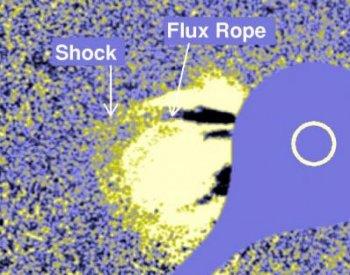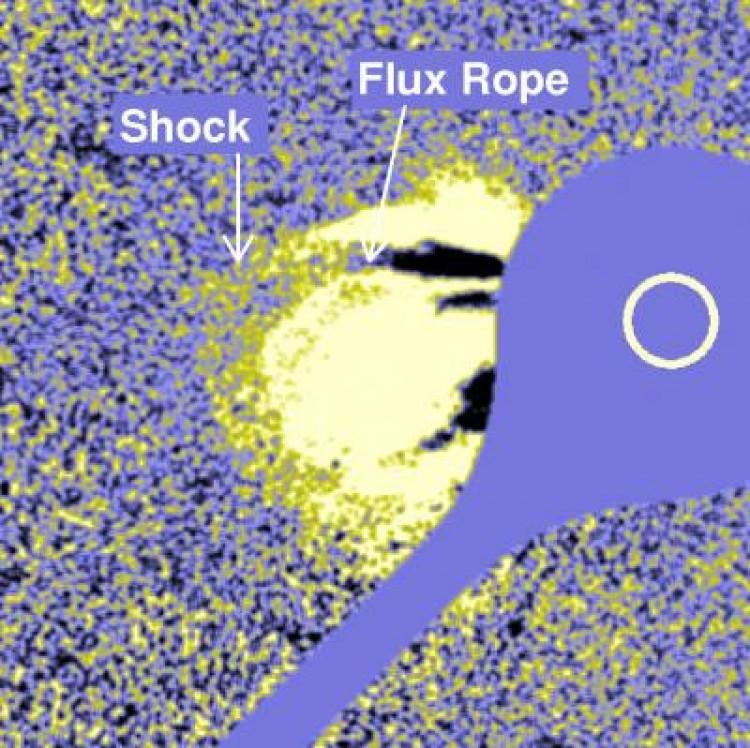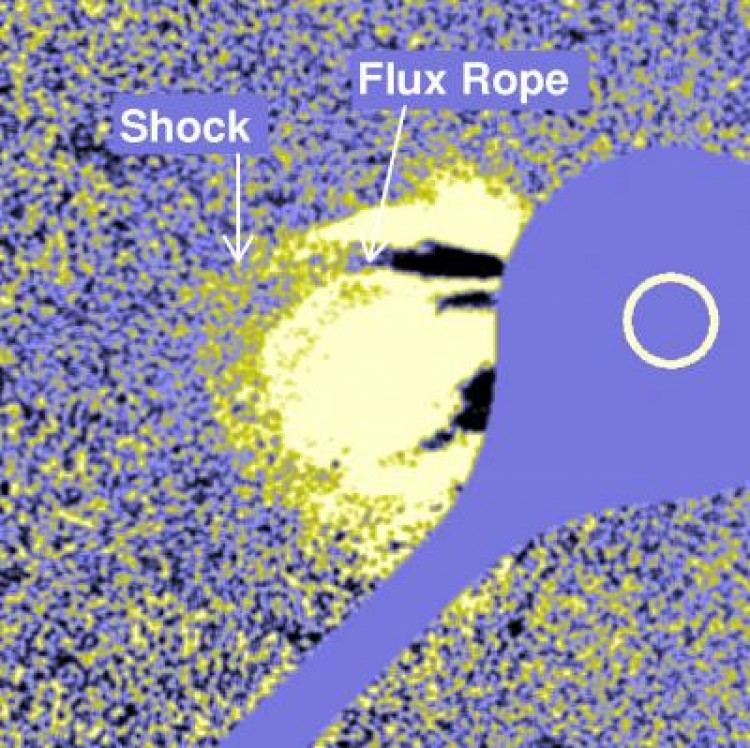New Methods Measure the Sun’s Magnetism
NASA scientists have discovered a new way to study the magnetic fields in the sun’s upper atmosphere or corona.

The brighter area represents the edge of the CME (a large slinky-like structure called a flux rope) while the fainter area beyond represents the bow shock. Measuring the distance between these two helps measure the magnetic field strength in the corona. Gopalswamy/Astrophysical Journal Letters
|Updated:






